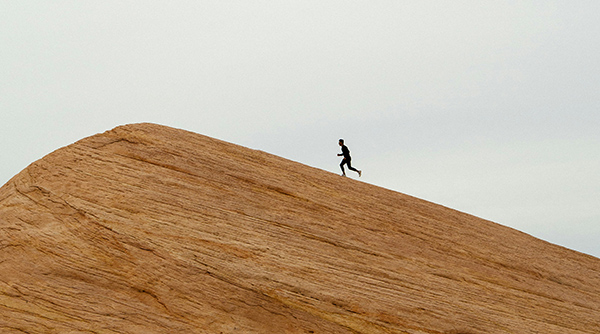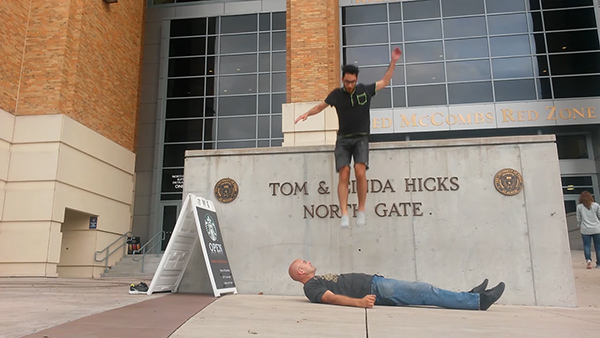
Some of the things we talk about in qigong practice may seem strange and even unattainable when you first hear about them. Ideas like being able to feel the flow of energy within you, being able to direct that flow in different ways through your body, and even use that energy in useful ways for example for healing or within the martial arts, might seem impossibly difficult when you haven’t even really thought about your energy before. These concepts may even seem magical or fantastical to you if you haven’t experienced working with your energy yet.
But the good news is that these are all quite natural skills that can be developed step by step. They are not supernatural gifts or magical powers, but rather just practical skills like any other that can be learnt and developed by studying correct principles and then applying them in practice over time.
There is something about the subtle nature of energy, and its somewhat less obvious effects that can make working skillfully with it seem less attainable to some people than other more physical skills. But the process is very much the same.

If you think of anyone who has an amazing physical skill – perhaps an athlete of some sort, they generally didn’t just wake up with that skill one day. It’s true that some of them may have had some natural talent to begin with, but generally they have had to work progressively towards achieving the amazing skills they display when they are at the peak of their athletic performance. They will have started by developing foundational ability – strength, balance, co-ordination, speed, dexterity, focus… (the exact combination of abilities depending on what is required for their particular athletic performance), through doing a variety of exercises that naturally develop these attributes. They will have then gone through a process of applying these abilities to their specific athletic pursuit, studying and practicing fine details of how to best use them. They may have even received extensive coaching to help them in this process.
The end result is something that can easily seem superhuman to many of us, but it is actually a very human process of incremental step by step progress. Or in other words, the process of developing ‘gong’ or skill.
I will digress briefly – into an example that is kind of a bit silly and fun, but relevant to our discussion. Some years ago I decided I would make some interesting videos to remember some of the different places I travelled to while teaching qigong around the world. I made a Youtube channel called Jump On John to record these videos. As I travelled to different locations, I would go somewhere, often close to a landmark of some sort, and then find someone to climb up on something and then jump down onto my stomach.
Quite silly… but fun as well, and to many people quite impressive. You can find some examples of these videos here, and browse through hundreds of them on the channel here.
The principle of how I could do these impressive feats is largely physical, no great skill with energy required, although having healthy free flowing vital energy is certainly a good base to support the development of such a skill. Rather it requires the understanding of correct principles and then the consistent practice of them… and the correct principles are not always the ones that people would think of immediately. I had some quite interesting conversations with people as I was recording these videos of how I was able to do it, some of whom were quite knowledgeable in health and fitness related fields – such as physical trainers or nurses. They were generally quite surprised when I told them that it was primarily a breathing skill, because the breath is the function that naturally activates all of the tissues that surround our torso, so high level strength, responsiveness, and co-ordination between these tissues is primarily developed by working with the breath.
The nature of this skill was so unusual that some people when they saw these videos would assume that there was some sort of trickery involved – but there never was. I had never met most of the people who jumped on me prior to more than a few minutes before they jumped in a public place – there was certainly no time to set up a trick, or coach them in a special way they needed to jump. It was just plain skill – developed over time.

I’ll let you in on a secret, I didn’t have someone climb up to 6 feet off the ground and jump on me the first time I did this. I had already worked with my breath for many years to develop the base of my ability – then the first time I did it, I had someone just step onto my abdomen as gently as they could. I then progressed to having them climb up just a few centimeters and jump down from there, and then higher, and higher, until I had full grown adults jumping from about 8 feet off the ground down onto my abdomen. It was step, by step by step. (If you were wondering how I first started doing this strange thing, it was for a kung fu demonstration many years ago, demonstrating the impressive resilience that can be developed through skillful practice. You can find a video of that here.)
These physical performances are in some ways easier to see and comprehend the path of incremental progress towards, maybe because they are easily visually observable, while the effects of developing our energy are often more subtle and internally perceived. But the process is very much the same. It is referred to intrinsically within the name of the practice: Qigong – Qi (氣) translates as energy, and gong (功) translates as work or skill. It is implicit that the skill with energy comes through work and practice over time – not as some kind of supernatural process.
By learning correct principles of how to work with your mind, your body, and your breath to connect to your energy, you can develop skill with it little by little over time, until you too can have an impressive ability to use it in useful ways – probably not in some way that is easy to show off to others, but in ways that nurture your health and wellbeing, lead to a richer and more harmonious interaction with others and the world around you, and possibly even allows you to help others through the skill you have developed with your living energy or qi!
- And… you’ve learned lots of difficult skills before. For example, at some stage you learned to stand balanced on one leg, swing the other leg forward and then transfer all of your weight onto your other leg, and then repeat that again and again without falling over!
- You also learned to listen to literally thousands of different strange sounds, distinguish between the often very similar sounds, and then interpret what each of them means! To take this a step further, you even learned to make the sounds yourself in a way that other people could understand them.
- And this last one – I definitely know you did at some point, because you are using it rig now. You learned to look at strange squiggles on a page or screen, and then connect them to the meaning of those strange sounds that you learned to interpret earlier!
Maybe these examples seem a bit silly, because after all – pretty much everyone can walk, talk, read, and write, unless they have some kind of significant impediment. But each of these are seriously impressive skills, requiring an amazing amount of effort and practice to develop to a useable level. Because it is so common to have these skills, and because as adults each of us developed them so long ago, we tend to forget just how much work was involved in developing them. How many times we fell over before we learned to balance well. How confusing it was to listen to the strange sounds around us. How limited our ability to create those sounds of speech were to begin with. But we did it – and developing skill with our energy is really no different. Each of us can do it if we put in the effort. Our first attempts may not be very impressive, like a baby gurgling and gooing as it first starts to try to form words that are understandable by others, but little by little we improve and develop incrementally until we develop a very useful skill set that just seems natural to us.

Of course it helps to have some good guidance along the way, to point us in the right direction to develop these abilities in the easiest ways. It also helps to have that attitude of a child – its ok to fall over once in a while and to not succeed straight away. While we talk about ‘gong’ as work, we can also bring an attitude of playfulness to the process, the important thing is to be persistent over time, and with that you will surely succeed.
Further Resources
If you would like to explore developing skill with your energy (literally qigong), you might like to check out this article on some simple exercises to feel your qi. Having even a tiny experience of feeling your energy gives you a starting point to build on incrementally and start to develop skill.
You might also like to check out the free course Introduction to Qigong Theory and Practice. This course goes further and gives you an overview of the history of qigong and the fundamental principles of how it works. It also includes simple exercises that you can do to experience how each of the main tools in qigong, our mind, body, and breath, contributes to our ability to connect to and start to develop skill with your energy.
We also have a range of other resources you can explore, including free videos of qigong practices that you can try, regular classes where you will experience a variety of different qigong practices led by an experienced instructor, and comprehensive courses where you can develop a solid understanding of qigong principles and practices as they apply to different areas of focus.
I hope you have enjoyed this article. If you would like to stay informed of when we publish future articles, and also details of upcoming classes and courses, you might like to subscribe to our email newsletter below 😊.